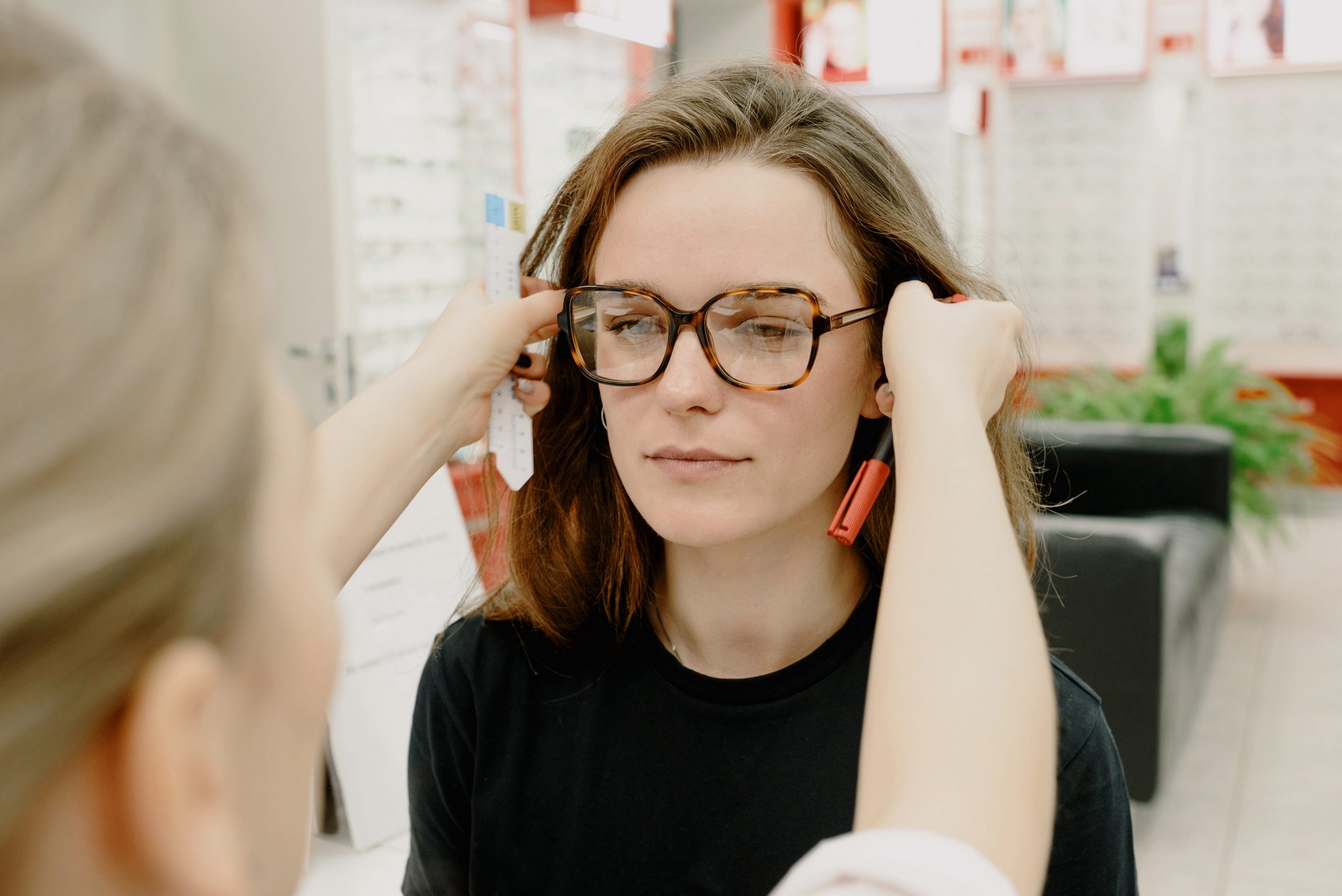OA Corner Part 42

The fitting cross should align with the centre of the pupil in order for the patient to see clearly
In last month’s article, we looked at a patient collecting their first of pair of spectacles with single vision; this month, we turn to progressive powered lenses (PPLs).
Most patients will need a little time to completely adapt to their first pair of PPLs; spending some time with them on collection can make all the difference as to how successful their adaption can be.
Always ensure you have the patient’s details in front of you, and check which lenses they have, and the standard of vision they are expected to see. The fitting cross position should be already temporarily marked on the lenses, and this should align with the centre of the patient’s pupil. If for some reason the temporary markings have been removed, you should re-mark the lenses. This is important, as the fitting cross should align with the centre of the pupil in order for the patient to see clearly.
Once you are happy with the alignment of the fitting cross, you can then either fit the frame, of check the fitting again if he frame has been pre-fitted. If you need to make any further adjustments to the fit, you should check the fitting cross position again to ensure the adjustments have not altered the fitting cross position.
When checking the position of the fitting cross, it is important to ensure your eyes are level with the patient’s eyes, and the patient adopts their usual head posture. Ask the patient to stand up and walk around for a minute so you can check their natural head posture both sitting and standing.
If the fitting cross is too high, the distance vision may be blurred, and if it is too low, the patient may not be able to see to read clearly. An indication that the fitting cross is too high is the patient reporting that they have to lower their head to see clearly in the distance. If it is too low, they may say they have to raise their head to read.
Once you are happy with the positioning of the frame and lenses, you can clean the lenses and remove the temporary markings. If you do not think the fitting cross aligns with the pupil centre, you should seek the advice of a registered colleague.
The next step is to give the patient some instructions on how to use the lenses. The patient should be able to see clearly in the distance when looking straight ahead – but may find things are not so clear if they move their eyes to glance in the periphery. You can advise the patient to point their nose at what they need to see, so the lens moves with the patient. This technique should only be needed during the adaption period, which can range anything from a couple of hours to a couple of weeks.
You should ask the patient to stand up and look at the floor. If they glance down, the floor will look blurred if they look through the reading portion of the lens. Ask the patient to lower their head so they are looking through an area closer to the top of the lens until the floor becomes clearer. This will make it easier for them, especially when going up and down steps and stairs, especially during the adaption period.
You should advise the patient only to drive in their new PPLs once they are confident that they have fully adapted to the lenses, and to wear them in familiar environments first – such as around the house.
To read, the patient should keep their head in a straight ahead position and look down through the lower part of the lens. If they drop their head too much, the reading area is lowered too and this may make reading difficult.
I find it helps the patient see the different areas of the lens if you ask them to raise and lower their head whilst looking into the distance so they can see how the power varies over the surface of the lens. The intermediate zones of the lens will be in between the distance and near zones, and you should explain to the patient to experiment with raising and lowering their chin until the intermediate distance they need becomes clear, whilst still pointing their nose at what they want to see.
Use the near vision chart to check the patient is able to see the font size that they could achieve in the test, and ask them to look into the distance to check it is clear. If there are any concerns, seek the help of a qualified registrant.
There should be no unexpected surprises for the patient when they start using their new PPLs, as this can result in the patient losing confidence in the lenses.
Vision through PPLs is dependent on the frame fitting correctly, and this can change over time. The frames may work loose through use or may become twisted and misaligned. You should advise the patient to return to the practice if the frame starts to slip, or if it becomes bent, as this may affect their vision through the lenses.
To summarise, taking time to fit the spectacles correctly and explain how the lenses work can make all the difference to patient acceptance of first-time PPLs.
Sue Deal FBDO R is a practising dispensing optician, ABDO College examiner, senior tutor and supervisor for dispensing opticians. She is also a practice visitor and external moderator for ABDO. She was recently awarded the ABDO Medal of Excellence for her outstanding services to the profession.